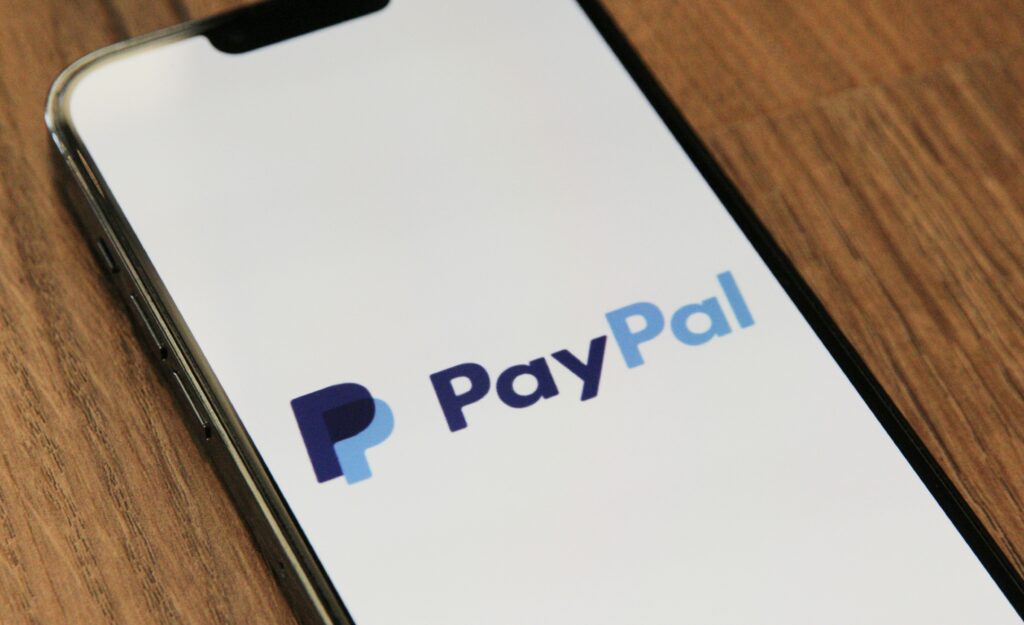Chargebacks are something every merchant faces. Unfortunately, there’s never going to be a day when you enjoy 0% chargebacks. However, with most merchants losing 2% – 8% off their top-line revenue, it’s no surprise that you’ll want to take action.
The good news is that are numerous ways to increase your bottom line. From implementing artificially intelligent fraud prevention tools to providing better customer service, there are so many quick wins when it comes to fighting chargebacks as a high-risk merchant.
In this first post of a two-part series, we will take a look at the best techniques for preventing chargebacks before moving onto dealing with chargebacks once they’ve been issued in part two.
So without further ado, let’s address why prevention is your best form of defense against chargebacks.
Why Chargeback Prevention Strategies Should Be Every Merchant’s Priority
All e-commerce businesses rely on credit card payments to scale. But the convenience of offering customers the option to pay with a card does with drawbacks, namely in the form of chargebacks and fraud. While you’ll never be able to eradicate either of those issues in a card-not-present (CNP) environment, it’s crucial that you take a proactive approach.
The reason you have to be so proactive is that once a chargeback has been issued, the charges really start to stack up. Even if you win a chargeback dispute, it will cost you a pretty penny to do so when you consider the chargeback fees you’ll receive from your payment processor as well as the representment costs incurred doing the chargeback process (such as spending hours pouring through reason codes).
It’s why they take such a chunk off the top-line revenue of so many merchants. Not only do they incur charges, but they also cost you money in terms of the labor hours spent on fraud and chargeback management. Bigger merchants doing six or seven figures often employ a full-time staff member to fight chargeback fraud alone.
But there is a better way – chargeback prevention. By getting ahead of problematic and fraudulent transactions with a proactive rather than a reactive approach, you can stop them from inflicting any damage on your business in the first place.
There are plenty of chargeback protection techniques you could employ, but let’s focus on those that give you the most bang for the buck, starting with machine learning tools such as Kount.
Did you know that chargebacks are more common in the United States than in any other country? Read our guide to dealing with chargebacks in the US market to ensure you employ the best techniques to keep them in check!
#1: Install Artificially-Intelligent Fraud Protection Tools
Machine learning is leading the fight against fraudulent transactions. While payment gateway tools such as the Address Verification Service (AVS) are useful, fraudsters have devised sophisticated methods to bypass these older fraud prevention tools. That’s why it’s worthwhile investing in the latest and greatest technology to prevent criminals from derailing your online business.
There are plenty of options out there, but we recommend Kount. We’ve found that it provides the best protection throughout the customer journey – from account creation and login right through to payments and disputes.
It works by plugging in dozens of data points for each transaction in real-time such as IP address, billing address, time of day, device, and so on, before giving the transaction a score. The lower score, the more suspicious the transaction.
A good method for protecting your business and your merchant account is setting limits on the scores you accept. For instance, you could program your payment gateway to reject a transaction with a Kount score of below 70.
The only word of warning we would attach to installing a solution like this is that putting too many parameters for Kount to analyze could hurt your conversions.
It’s an excellent idea to start with the most basic settings in Kount. You can then monitor the impact on conversions as you introduce each new parameter going into the score calculations. Eventually, you’ll find a happy medium that drastically reduces chargebacks, manual reviews, and false positives without hurting your approval rates and revenue too much.
#2: Make Use of Payment Gateway Tools
Many merchants still fail to use their full suite of anti-fraud tools included by their payment gateway. We’ve already mentioned AVS, which cross-references the cardholder’s address with the card issuer’s records to prevent payments made with stolen cards. But there are so many more features that you can use. Asking for the CVV number is also a simple rule that helps rule out some criminals who only stolen the long card number.
Regardless of your specific solution, there will be settings in there that you can alter to prevent impending chargebacks and fraudulent transactions from slipping through the net. For instance, one of the easiest ways to prevent repeat friendly fraud offenders is to block the card, IP address, and email address associated with them.
You can take proactive measures too. For example, you could set limits on the number of transactions a card, account holder, email, or IP address can make per day, week, month. By implementing these simple but effective rules, such as max transactions per card or email, you can dramatically reduce the number of fraudulent or chargeback-bound transactions.
Finally, another tool that most payment gateway service providers now offer is 3D-Secure 2 (3DS2). Now, I know what you’re thinking, but no, this isn’t the “conversion killer” 2.0. Instead, the software doesn’t require customers to leave your site (you usually connect via API), and it also uses machine learning to decipher fraudulent transaction patterns.
While it’s essential to note this a legal requirement on transactions processed in the EU, it also requires a second form of authentication for a transaction to be processed. The benefit for you as a merchant is that the onus shifts from you to the customer to prove that a transaction was fraudulent if they attempt to issue a chargeback.
If you’re worried that an extra layer of authentication may hurt conversions, you can test it out on certain traffic sources (perhaps your most high-risk) first and monitor the results. Then if you’re happy with the effects on conversions, you can roll it out for all online payments.
#3: Providing Excellent Customer Service Is an Easy Chargeback Prevention Strategy
Here’s something that you might not have taken into account, a substantial proportion of customers who issue a chargeback contact customer service first to seek a resolution. It’s only after they’re not satisfied with your response that they will contact their issuing bank to initiate a chargeback.
Therefore, merely implementing excellent customer service protocols (which should always be the aim of any business) can pay huge dividends in terms of your chargeback rates. The first step is being available for your customers when they encounter an issue so that you can resolve it quickly. Always respond to emails quickly, and providing a toll-free number for customers to call is also a good idea.
Another excellent strategy is to install a live chat feature on your website that customers can access right away and connect to one of your customer support agents right there and then. Of course, it goes without saying that your agent should be highly-trained and experienced in resolving customer dissatisfaction to avoid disputes descending into fraudulent chargebacks.
#4: Pay Attention to Your Descriptor and Test Regularly
So many chargebacks occur simply because a cardholder doesn’t recognize a charge on their credit card statement. For online retailers, this is one of the easiest steps you can take to avoid chargebacks. Just finding a mistake on a descriptor can avoid dozens of chargebacks for high-volume merchants.
Thus, when setting up your descriptors, make sure that they are easy to remember for those that have made a card purchase from you. If they don’t jog the memory of your customers, you’re already in trouble. You get 23 characters, but it’s wise to use less to ensure that nothing can be accidentally chopped off the end.
Likewise, you’ll be asked to provide a telephone number or zip code. We suggest using a telephone number and again make sure it’s 12 characters or less to ensure it doesn’t fall off a printed card statement.
Once everything is set up, you need to test your descriptors to ensure everything works as planned across the different card brands such as Visa and Mastercard. Perform a test transaction on each of your accepted credit card brands and then check how they appear on your statement. Pick up any errors that could cause a chargeback (such as an incorrect telephone number) and rectify them.
Occasionally, descriptors do inexplicably change after months of returning the correct name and phone number. So it’s worth performing a descriptor test every quarter to ensure everything is as it should be.
#5: Analyze Your Traffic Sources for Chargeback Hotspots
Another chargeback prevention strategy that so many merchants overlook is analyzing traffic sources. This activity is vital for high-risk merchants. Looking at your overall chargeback rates only gives you an overview of your chargebacks. To keep your chargeback ratios within acceptable limits for your merchant account, you need to go into granular detail.
The best place to start is with your traffic sources. Maybe your chargeback ratio is 0.8% across the board, but you’ve found an affiliate is accruing one chargeback every ten sales they make for you. Retraining them to ensure they aren’t misrepresenting your products or banning them from promoting your product altogether if they continue to return high chargeback ratios could suddenly save you hundreds of dollars in chargeback fees.
Alternatively, perhaps a Facebook Ads campaign you are running is attracting a lot of chargebacks, and you need to temporarily pause it to find out what’s causing the issues.
The point is you won’t know unless you investigate, so take the time to go through the analytics data and find out precisely where your chargebacks are coming from. You never know; you might find several quick wins.
Get Help Implementing winning Chargeback Prevention Strategies with the Experts at DirectPayNet
There’s no greater threat to your payment processing than chargebacks. Worse, a huge slice of those chargebacks will be issued fraudulently, meaning there was nothing you did wrong as the merchant.
When it comes to chargebacks, prevention is better than cure. It’s almost too late once a chargeback has been filed. You’re going to incur costs even if you win the revenue from the sale back. You also need to watch them like a hawk to keep your merchant account providers happy to ensure that you continue to accept credit card transactions.
Here at DirectPayNet, we are experts at devising winning chargeback prevention techniques, those mentioned above are powerful tools, but they only represent a fraction of strategies that gain results. Stay tuned to view part two, where we tackle post-chargeback management strategies!







